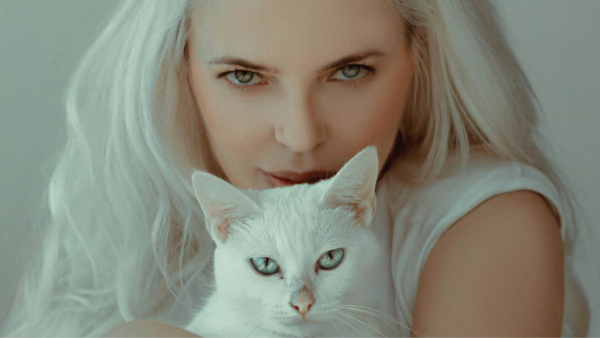
New research is painting a very different picture about the relationship between cats and their owners, one in which cats not only really do have affection for their owners, but the two are in fact engaged in an intricate dance regulated by the same human functions we engage in with our parents and children.
Cats are often thought to be cool customers, at least in comparison to dogs. We’ve all experienced the way they walk away the moment we want to pet them, or even worse, the way they meow for cuddles and then immediately scratch us when we oblige. Compared to dogs, it’s a much more capricious temperament! But temperament, as it turns out, does not equate to true affection, at least as it pertains to these fickle felines.
SeventyFour | Canva Pro
A 2025 research collaboration between South China Agricultural University, Texas Tech, and the Ramical Pet Health Technology Company found that people who refer to their cat as their “fur baby” or themselves as a “cat mom” or “dad” actually aren’t all that far off, no matter how much non-cat people may roll their eyes.
Myriad studies over the years have shown that spending time with a cat can both lower cortisol, the stress hormone, in their owners and spike oxytocin, aka “the love hormone,” and that’s the same exact chemical that bonds a parent to a child. That’s why skin-to-skin contact is now recommended after birth: It sparks the parent-child bond.
But it turns out that not only do cats spike owners’ oxytocin levels, but the mechanism goes in the other direction, too. The bond between cats and their humans turns out to be nearly as intricate as a human one, maybe even more complicated. (Because, you know… CATS.)
: 5 Reasons Men With Cats Are Elite Partners
Interestingly, the feline-human parallels go one step further. Did you know cats have attachment styles, just like we humans do? Well, they do, and they are mediated by oxytocin.
The Chinese/Texan study found that petting a cat spiked both the cat’s and the owner’s oxytocin levels, but for the cat’s part, it spiked if and only if the petting was wanted and welcomed.
To track this, researchers monitored 15 minutes of affection and play between cats and their owners, and found that securely attached cats who initiated contact saw an oxytocin spike from their human’s affections. They also had fewer behavior problems, just like securely attached kids.
But for anxious and avoidant cats? The opposite happened. Their oxytocin levels plummeted, including in the anxious cats, defined as the ones that are constantly asking for attention but then lash out when they get it, whose oxytocin levels are naturally high all the time. Consent matters, even for cats, okay?!
: 4 Things Cats Take Into Consideration When Choosing Their Favorite Human
As far as the ongoing feud between dog and cat lovers about which animal is more loving and less needy, it’s unfortunately a mixed bag. Yes, your cat loves you, and we have the chemical research to prove it. But a dog’s affection is much, much simpler.
As The Conversation noted, this is mostly down to evolution. Dogs have been selectively bred into being more independent companions for us humans, but they are pack animals at heart, which means they automatically have an evolutionary pull toward attracting a companion’s attention and affection.
 Anna Tarazevich | Pexels | Canva Pro
Anna Tarazevich | Pexels | Canva Pro
Cats are the opposite: They were domesticated from animals that are far more solitary, hunting mostly solo, so that companionship isn’t part of their basic survival. Hence, yes, cat owners, you’re right, cats are far more choosy about who they will and will not spike their oxytocin for.
The bottom line is one that many cat owners will be the first to tell you: You have to befriend and show affection to a cat on the cat’s terms, not your own human ones. If you want a cat’s love, you gotta earn it! And most cat owners wouldn’t have it any other way.
: People Who Prefer Cats Over Dogs Usually Display These 5 Specific Personality Traits
John Sundholm is a writer, editor, and video personality with 20 years of experience in media and entertainment. He covers culture, mental health, and human interest topics.